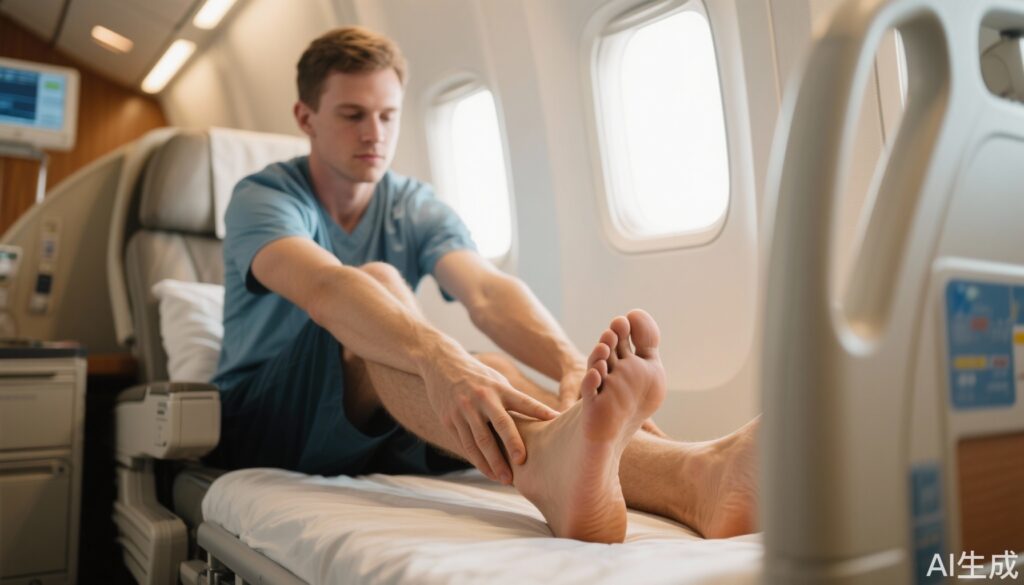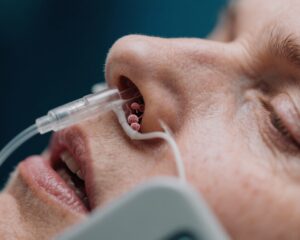Introduction: The Importance of Ankle Pumps in Health and Rehabilitation
Ankle pumps are a simple yet highly effective exercise that targets the muscles of the lower leg — namely the gastrocnemius, soleus, and muscles around the ankle. These exercises are vital tools in various clinical and everyday contexts, ranging from preventing blood clots during long flights to facilitating tendon and muscle recovery after injury. Despite their simplicity, ankle pumps play a pivotal role in maintaining healthy circulation, enhancing muscle strength, supporting balance, and speeding rehabilitation. This article explores the science behind ankle pumps, their therapeutic and sports applications, and how best to incorporate them into your routine for maximal benefit.
What Are Ankle Pumps?
Ankle pumps are a bodyweight exercise involving repeated dorsiflexion and plantarflexion of the ankle — in other words, flexing the foot upward towards the shin and then pointing the toes downward away from the body. This rhythmic motion actively engages the calf muscles: the gastrocnemius (the visible, bulging calf muscle) and the soleus (a deeper muscle beneath the gastrocnemius), as well as the ankle joint itself.
Commonly performed while seated or lying down, ankle pumps require no equipment and can be done virtually anywhere. When performed standing, they resemble calf raises and contribute to ankle stability and strength in a weight-bearing setting.
How to Perform Ankle Pumps Correctly
1. Sit comfortably on a chair or lie flat on a bed.
2. Slowly flex your foot, pulling your toes upward towards your shin. Hold for about 3 seconds.
3. Point your toes downward, as if pressing down on a car’s gas pedal, and hold this position for 3 seconds.
4. Repeat this cycle continuously, performing 20 to 40 repetitions every 30 to 60 minutes during periods of inactivity.
Variations include flexing and pointing the toes at different angles, which can activate muscles slightly differently and improve ankle control. Incorporating exercises such as tracing letters or numbers with your foot can be particularly beneficial during rehabilitation as they enhance ankle mobility and coordination.
Scientific and Clinical Evidence: Why Ankle Pumps Are More Than Just Simple Movements
The primary clinical role of ankle pumps is to promote venous return — the mechanism by which blood from the lower limbs returns to the heart. Veins in the legs depend heavily on the “muscle pump” effect because the venous blood pressure is low compared to arteries. The contraction of calf muscles compresses veins, propelling blood upward against gravity and reducing pooling.
Research shows that immobility and inactivity, especially post-surgery, during hospitalization, or prolonged flights, significantly increase the risk of venous thromboembolism (VTE), a condition marked by dangerous blood clots. These clots can restrict leg circulation and potentially travel to the lungs or brain, causing life-threatening complications.
Ankle pumps effectively reduce venous stasis by eliciting frequent muscle contractions that squeeze the veins and facilitate blood flow back to the heart, thereby lowering thrombosis risk. Hospitals often use mechanical compression devices to mimic this effect in bedridden patients, but active engagement using ankle pumps is a cost-effective and accessible approach.
Applications of Ankle Pumps in Rehabilitation and Injury Prevention
In sports and daily activities, ankle pumps serve as an excellent warm-up, particularly in preparing the Achilles tendon—a critical tendon connecting the calf muscles to the heel bone. The tendon can become tight or strained, especially in colder climates or during sudden intense physical exertion. Gentle ankle pumping increases blood flow and flexibility, helping to prevent injuries such as strains or tears.
For athletes and older adults, strengthening the ankle complex through ankle pumps and weighted variations (calf raises with dumbbells or resistance bands) improves joint stability and balance. This is critical in reducing the risk of ankle sprains and falls, which can lead to fractures and extended disability.
Post-surgical patients benefit significantly from ankle pumps as well. After leg surgeries or periods of immobilization, muscles rapidly lose strength (atrophy). Regular ankle pumps help maintain muscle tone, enhance circulation, and accelerate functional recovery.
A Patient Scenario: Meet John, Recovering Stronger with Ankle Pumps
John, a 68-year-old retired teacher, underwent knee replacement surgery. During his hospital stay, John was encouraged by his physiotherapist to perform ankle pumps every hour while resting to improve circulation and reduce clot risk. At home, he continued the routine and gradually incorporated calf raises with light weights to rebuild strength. Over weeks, John noticed improved ankle mobility and less swelling, which contributed to a faster rehabilitation and earlier return to walking without assistance.
Practical Tips for Incorporating Ankle Pumps into Your Routine
– Consistency is key: Perform ankle pumps every 30 to 60 minutes when sitting or inactive.
– Aim for 20 to 40 repetitions per session; more repetitions can be particularly beneficial for older adults or those with circulatory issues.
– Progress intensity gradually: Transition from seated to standing as strength improves, and consider adding light weights to challenge your muscles further.
– Use variations such as tracing shapes or numbers to enhance ankle control and coordination.
– In travel or hospital situations, ankle pumps are highly valuable and easily done even in confined spaces.
Common Misconceptions About Ankle Pumps
Some people underestimate the importance of ankle pumps, thinking passive leg movement or occasional walking can replace them. However, the specific muscle contraction pattern and vein compression created by ankle pumps cannot be fully replicated by other movements.
Others believe high-impact exercises are necessary for effective circulation and strength building. While high-impact exercises have their place, gentle ankle pumps are not only safe for most individuals but also uniquely suited for acute recovery phases or those with limited mobility.
Conclusion: A Small Movement with Big Health Benefits
Ankle pumps, though simple in practice, offer profound health advantages, particularly in preventing venous thromboembolism, preserving muscle integrity, and facilitating rehabilitation. Their accessibility, versatility, and therapeutic efficacy make them ideal for people of all ages and health statuses. Regularly integrating ankle pumps into your lifestyle—whether during hospital stays, long journeys, athletic warm-ups, or recovery periods—can markedly improve circulation, reduce injury risks, and enhance overall lower leg function.
Healthcare providers and fitness professionals alike should emphasize ankle pumps in patient education and rehabilitation protocols, ensuring this uncomplicated exercise reaches those who need it most.
References
1. Kakkos SK, Caprini JA, Geroulakos G, et al. Combined intermittent pneumatic leg compression and pharmacological prophylaxis for prevention of venous thromboembolism in high-risk patients. Cochrane Database Syst Rev. 2016;9(9):CD005258.
2. Robinson J, Deacon S, Cheung RT, et al. The epidemiology, clinical assessment and treatment of Achilles tendon injuries: A narrative review. Br J Sports Med. 2022;56(8):414-421.
3. Watson PS, Kisner C. Effect of ankle pumps with resistance on calf muscle blood flow. Phys Ther. 1985;65(7):1087-1092.
4. National Institute for Health and Care Excellence (NICE). Venous thromboembolism in over 16s: reducing the risk of hospital-acquired deep vein thrombosis or pulmonary embolism. NICE guideline [NG89]; 2018.
5. Hamilton WG, Pollock NA. Postoperative rehabilitation after total knee arthroplasty. J Orthop Sports Phys Ther. 2018;48(6):432-443.




